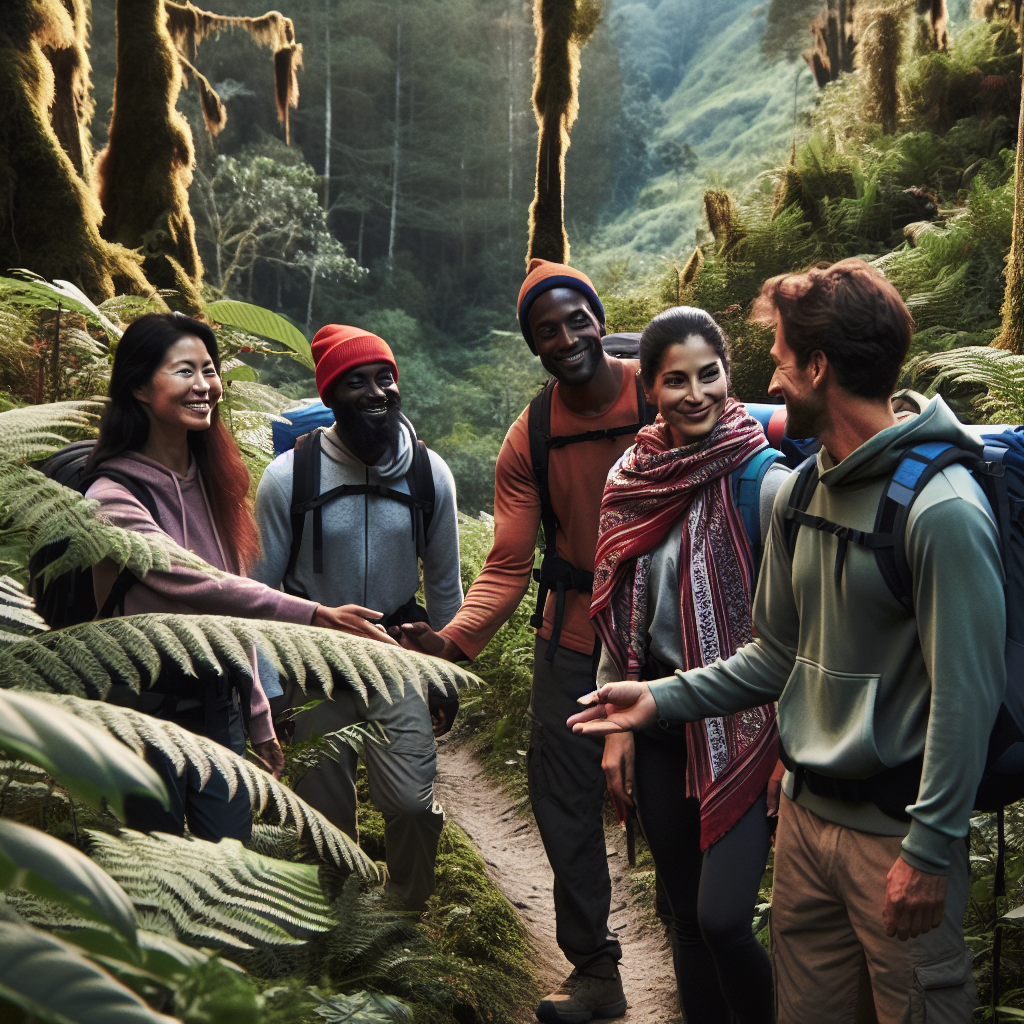Respect the Trail: Hiking Etiquette 101
Respecting the trail is a fundamental aspect of hiking etiquette that every outdoor enthusiast should prioritize. When venturing out into nature, it’s crucial to minimize your impact on the environment and show consideration for others sharing the trails. One of the primary rules to remember is to stay on the designated path and avoid creating new trails, as this can lead to soil erosion and disrupt the natural habitat. Additionally, hikers should refrain from littering and always strive to leave the trail cleaner than they found it.
Furthermore, respecting the trail also involves yielding to other hikers, especially on narrow or steep paths. Uphill hikers generally have the right of way, and it’s essential to step aside to let them pass comfortably. When taking breaks, be mindful of where you rest to ensure that the trail remains unobstructed for fellow hikers. By being attentive to these simple yet effective guidelines, you contribute to preserving the trail for everyone’s enjoyment and help maintain its natural beauty for future generations.
Navigating Crowded Trails: Tips for Trail Etiquette
Navigating Crowded Trails: Tips for Trail Etiquette
As hiking continues to grow in popularity, trails are becoming increasingly crowded. Navigating through bustling trails requires hikers to practice proper trail etiquette to ensure everyone’s safety and enjoyment. Here are some essential tips for hiking trail etiquette when facing crowded trails:
1. Mind Your Space: When the trail is crowded, it’s crucial to be mindful of your space. Avoid walking in large groups that block the entire trail and make it difficult for others to pass. If you need to stop for a break, step to the side and allow others to continue on the trail unobstructed.
2. Yielding to Others: Uphill hikers typically have the right of way, as it’s more challenging for them to regain momentum after stopping. If you’re descending a trail, be prepared to step aside and yield to those hiking uphill. This small gesture can make a big difference in ensuring a smooth flow of traffic on the trail.
3. Communicate Effectively: When passing other hikers, communicate your intentions clearly and politely. A simple “hello” or “excuse me” can go a long way in indicating your presence and avoiding any misunderstandings on the trail.
4. Stay on Designated Trails: With crowded trails, it’s tempting to venture off the designated path to find some solitude. However, veering off the trail can lead to environmental damage and erosion. It’s important to stick to the marked trails to preserve the natural surroundings and prevent overcrowding in sensitive areas.
By following these tips for trail etiquette when navigating crowded trails, hikers can contribute to a more harmonious and enjoyable outdoor experience for everyone.
Building a Trail Community: The Importance of Hiking Etiquette
Building a strong trail community is crucial for the long-term preservation and enjoyment of hiking trails. One of the foundational elements of a thriving trail community is hiking etiquette. By following hiking etiquette, hikers can contribute to a positive and respectful trail culture that benefits everyone.
Hiking etiquette includes simple yet essential practices such as yielding to other hikers on the trail, leaving no trace by packing out all trash, staying on designated trails, and being mindful of noise levels to preserve the natural soundscape. These practices not only enhance the hiking experience for individuals but also contribute to the sustainability of the trails and surrounding ecosystems.
Furthermore, hiking etiquette fosters a sense of camaraderie and consideration among trail users. By adhering to established guidelines, hikers can create a welcoming and inclusive environment where everyone feels valued and respected. This, in turn, encourages individuals to become stewards of the trail, advocating for its preservation and maintenance.
Ultimately, promoting hiking etiquette is instrumental in fostering a trail community where individuals feel connected to each other and to the natural environment. Through shared respect and consideration, hikers can work together to ensure that trails remain accessible and enjoyable for generations to come.
